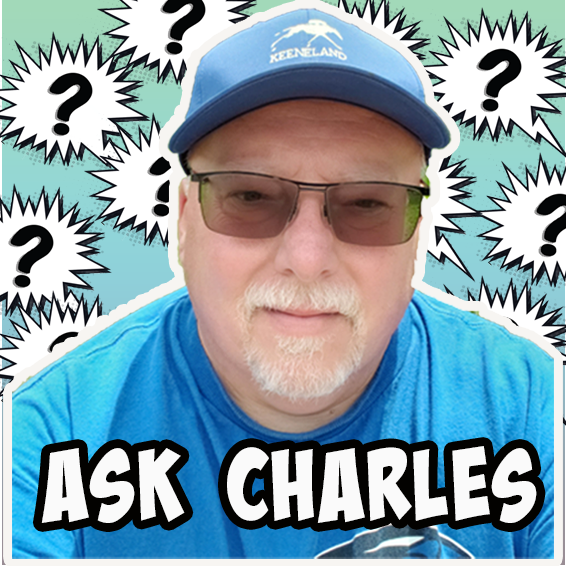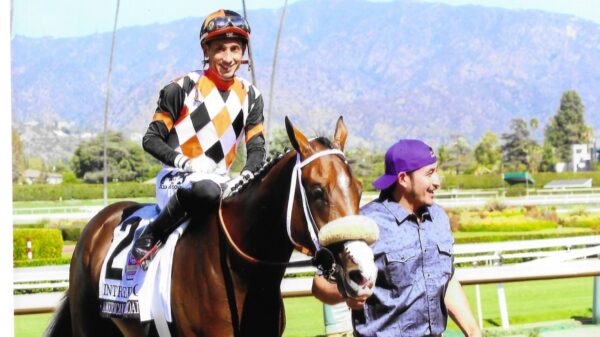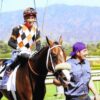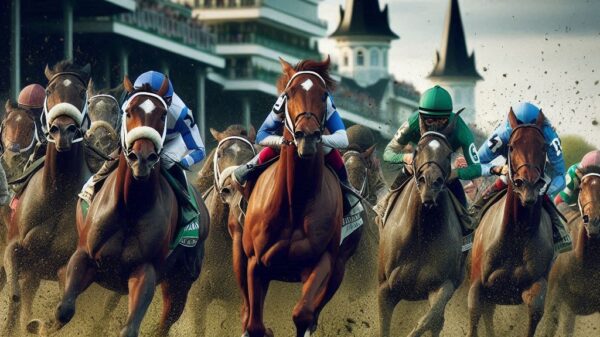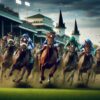
Charles Trent
Q– John M asked, having followed Horse Racing for over 40 years, I have come to realize day-to-day races look similar from track-to-track but racing rules and drug restrictions can vary between all states where racing takes place. Where do you land on this issue and is anything being done about this?
A– John you are right about this. As I mentioned earlier, tracks need to get together and form a commission like all major sports do. We need a Racing Commissioner so all tracks can come together with rules for racing and medication regulations for all.
There are some signs that tracks are banning together like on the Bob Baffert case he can’t run any of his horses at any track for 90-days. It will always be an issue as long some tracks take months to bring up violations on top trainers and then only giving them 10-day suspensions and a $500 fine.
I believe the rules are there to be followed not broken, so they can give a small fine and a few days suspensions for first offense, but they must go bigger fines and more days for a second time. If someone gets a third violation within two years, they must be banned for a year or more depending on what rule they broke. This is my opinion, but I see and hear more and more every day on what I just said is what tracks are thinking. So, hang in there and support your local track and remember not everyone is violating the rules.
Q– Joe A. asked, we all know there are basically three surfaces for racehorses in the U.S.A.; Dirt, Turf, and Synthetic. The one that intrigues me the most is Synthetic.
What are the different types of Synthetic surfaces?
A– Great question Joe. First of all, I’m Old School I like dirt and turf tracks. They say that synthetic is better for the horse. Well, in some cases that might be true. Everyone at the track knows Turf is the best for the horses and if the dirt track is done right, it’s better then synthetic tracks.
There are three different types that are used the most. First one is the Polytrack which is made of sand, spandex, carpet, and rubber. The second one is Tapeta. It is built with Tapeta mix at the top and a geo-textile membrane or porous blacktop underneath. Drainage layers are built underneath. The third, Cushion tracks are simple in comparison, a mix of sand, fiber, and wax. All three surfaces have a base of gravel to help with the drainage.
Each are very expensive to build and maintain. But the bottom line is that if the track is done right then it’s safe to race on. When it comes to fatalities, the track is only one factor. It depends on training, how hard they train , shoeing medications and so on.
Q- Scott L asked how does an owner or trainer select a jockey for their horse?
And my 2nd question is do you think the Derby winner not going to the Preakness a mistake? What would you do as the trainer?
A– Let’s start with the first question. If you’re a small barn trainer you usually try to get a jockey to work your horse one or two times, so they feel comfortable with you and the horse. Most good jockeys know how big barn trainers train their horses and that the horse is ready to roll.
Now, for a small barn trainer it’s hard to get a top rider at any given meet. I found out as a small barn trainer that there are Jockeys that don’t ride 7 to 9 races a day will give you a great ride. I had success with unknown riders, Jockeys coming out of retirement (Frank Olivares) and even Wolf Award winning jockey Jon Court.
Now for the second question. Do I think if Rich Strike passing on the Preakness a mistake? No, It’s up first to the trainer. Remember, they see this horse every day and they know how the horse acts when he is tired, sad, happy, sick, and so on. The trainer knows what’s best for their horse. Now if everything is good, it’s up to the owner to say yes or no ( they pay the bills).
What would I do? If the horse came out of the race in good shape and if I think he could handle the distance, I would recommend the owner to go for it. As most people know it’s hard to own, train and ride a triple crown horse which is almost once in a lifetime chance. But I still think they did the right thing because they know the horse.
About Charles Trent
Charles Trent started going to the races when he was 10 years old and bought his first racehorse when he was 18 years old. He’s been involved in the sport of Kings since. Charles understands both the gambling and training part of the sport.
He has owned horses on and off since 1985, trained horses from 1999 to 2008 and every horse that he purchased as a trainer got to the winner circle. Charles worked with top trainers and jockeys as an owner along with many great grooms, jockeys, jockey agents and even racing office personal as a trainer. Now, Charles is a Bloodstock Agent helping people start their journey in this Great Sport.
Charles will take your questions taking questions about horseracing from buying horses for racing to pinhooking, breeding, the ins and outs of the backside from a trainer’s point of view and even about gambling.
Send Charles Trent, Bloodstock Agent and Racing Manager of Big Casino Racing, your questions to Bigcasinoracing@gmail.com


